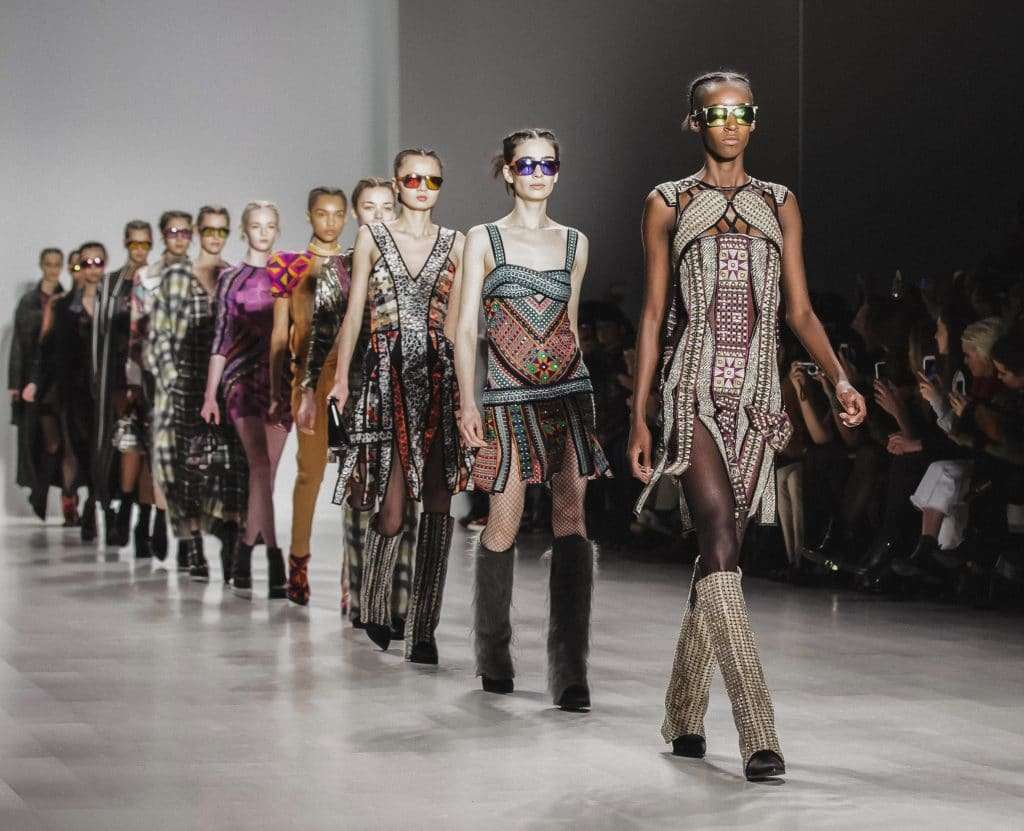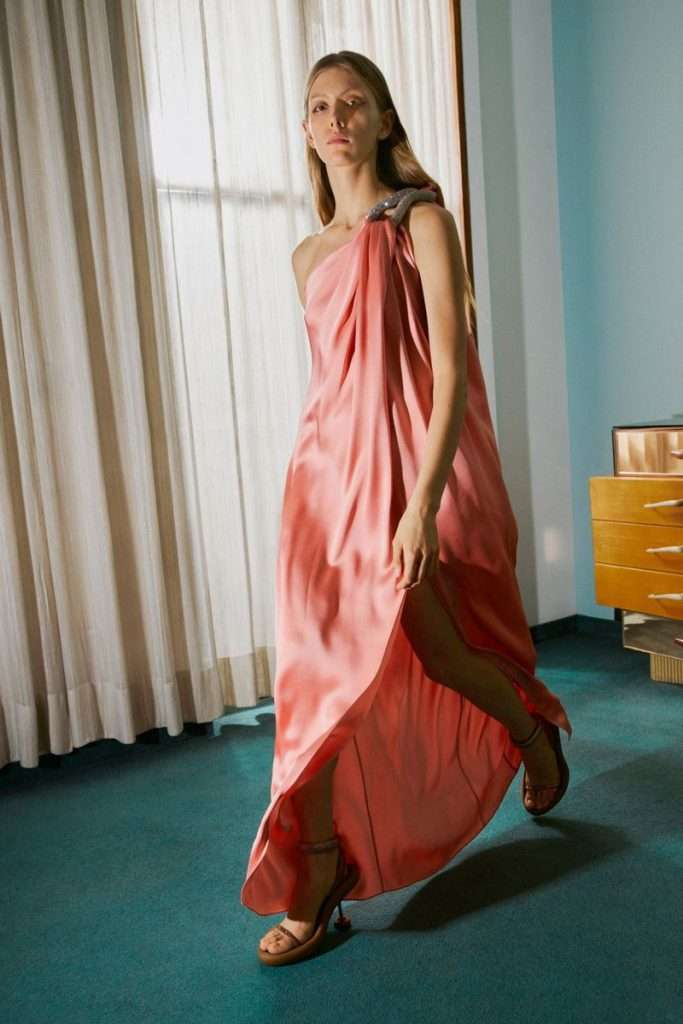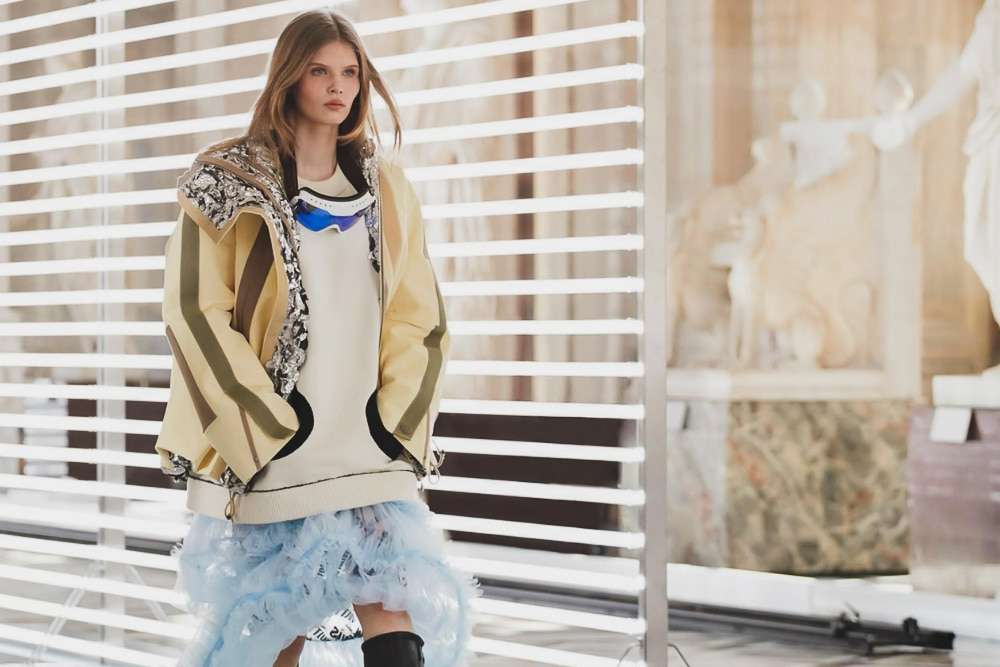The world’s Fashion Weeks need to decide which side of the coin they are going to magnify — and, for the sake of the planet, it needs to be sustainability.
Fashion Week is at a crossroads. The prestigious twice-yearly event, which takes place in London, Milan, New York, Paris, and now many other cities around the world, has been shaping the fashion industry since the early 20th century. But, right now, at least from the outside looking in, the historic and highly-respected events seem a little, well, confused.
Just recently, Naomi Campbell — world-renowned supermodel and familiar Fashion Week face — teamed up with fast fashion giant PrettyLittleThing to send $15 garments down the runway in front of the likes of Emily Ratajkowski, Julia Fox, and Winnie Harlow, ahead of the official opening of New York Fashion Week. But just months before, Oxfam hosted its own show at London Fashion Week in February, with celebrities, activists, and models like Tasha Ghouri, Daisy Lowe, and Munroe Bergdorf showing off second-hand pieces.
The two events perfectly embody two conflicting narratives that have been spinning around the fashion industry for some time. While the demand for quick, cheap fast fashion is growing dominant (demonstrated by the burgeoning behemoth that is Shein), the conversation around sustainability is also getting much louder.
Fashion Week’s relationship to fast fashion
When you think of Fashion Week, it’s likely that the first brands that come to mind are from the luxury sphere. For decades, names like Burberry, Alexander McQueen, Gucci, Chanel, and Louis Vuitton have hosted some of the most coveted shows in the Fashion Week calendar. You would be forgiven for thinking that the quality, expensive designs they showcase are exclusively for the rich and the famous — not the average Joe.
But while their designs are prohibitively expensive for most people, their overall message — that fashion is cyclical, the next up-and-coming trends can always be generated, and we must always be looking for new and shiny all the time — is highly accessible. Alongside cheaper copycat versions of designs, it has been taken by the fast fashion industry and dialed up to the incomprehensibly unsustainable rate of 6,000 new styles per day (hello again, Shein).

Most of these clothes will end up in landfills where they will not biodegrade because they’re mostly made with plastic-derived synthetics. Research suggests that one garbage truck of textile waste turns up at a landfill every single second. “[Fashion Week’s] philosophy trickles down throughout the entire industry, empowering fast-fashion brands to churn out new clothes at increasing velocity,” notes fashion writer Elizabeth Segran for Fast Company.
But now, as evidenced by Campbell’s show, the relationship between luxury and fast fashion is becoming even more cemented. And this is not just down to one event.
Last year, PrettyLittleThing showcased its new collection, helmed by Love Island star and mega-influencer Molly Mae Hague, during London Fashion Week. Like Campbell’s, the show wasn’t part of the official schedule, but the message from fast fashion was loud and clear: It has star power, influence, authority, and a loud voice in this space, and it’s not going anywhere anytime soon.
This attitude was also evident in Shein’s recent Fall/Winter fashion show, SHEIN Live: The Livestream, which was hosted by actor and influencer Teala Dunn.
Can Fashion Week leverage its influence in a more positive way?
But while fast fashion is undeniably gaining pace, sustainable style is also getting its voice heard. And Fashion Week is playing a role here, too.
It’s not just Oxfam that is sending a sustainable message, either. In 2020, Gucci revealed it would be taking a new approach to luxury fashion, by reducing its show count from five to two. “So much outrageous greed made us lose the harmony and the care, the connection and the belonging,” said former creative director Alessandro Michele.
That said, Michele has now stepped away from the brand, and it is unclear if new creative director Sabato de Sarno will stick to this approach.
But over in Denmark, Fashion Week is going from strength to strength in terms of sustainability. Copenhagen Fashion Week has strict criteria, which brands must meet if they wish to take part. The 18 Minimum Standards include things like finding “a second life” for samples, no destruction of unsold clothing, fur-free, sustainable materials, and zero-waste show production and set design.

Proving that Fashion Weeks can be timely and cutting-edge in terms of style and sustainability, Copenhagen Fashion Week introduces new creative talent from the Nordic region consistently and is currently prepping for its Autumn/Winter show in early 2024.
In Paris, Stella McCartney just showed its Spring/Summer 2024 collection and premiered an eco textiles marketplace. The brand is also committed to improving the industry and has been since its inception in the early 2000s. This September, models hit the runway in designs made from 95 percent recycled materials, as high-profile guests, like Paris Hilton and Cole Sprouse, watched on.
Just like Miranda Priestley once taught us, fashion really is all about the trickle-down.
“You go to your closet and you select that lumpy blue sweater,” the character, played by Meryl Streep and inspired by Vogue editor Anna Wintour, tells Anne Hathaway’s Andy Sachs. “But what you don’t know is that that sweater is not just blue. It’s not turquoise, it’s not lapis, it’s actually cerulean.”
She goes on to explain how cerulean garments were debuted by designers in Fashion Week collections before they ended up in department stores. “You’re wearing a sweater that was selected for you by the people in this room,” Priestley says.
So, if the people in the room could start selecting sustainability with every collection, perhaps we’d start to see real, eco-friendly changes start with Fashion Week, and end in our closets.
Related on Ethos:


